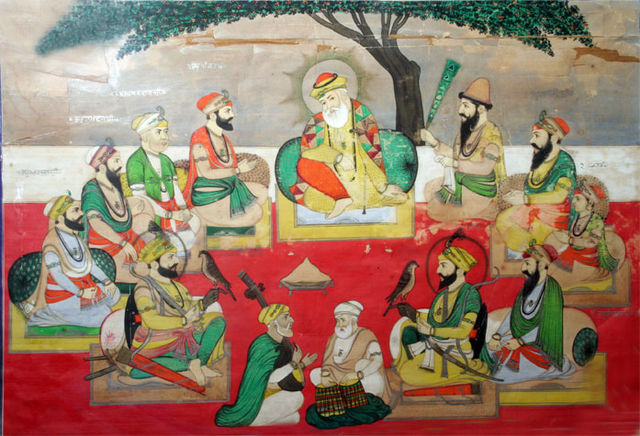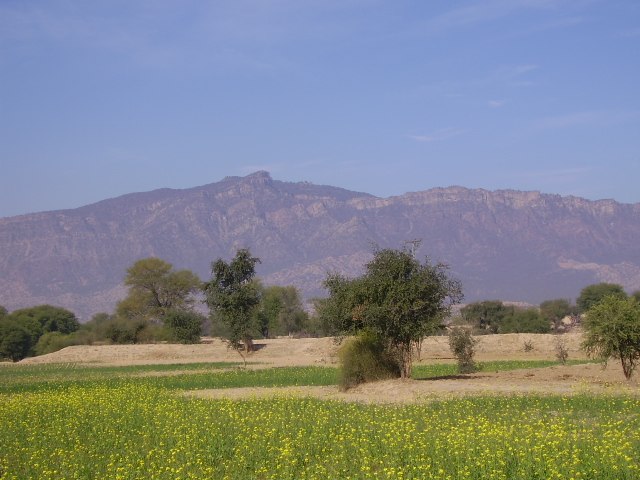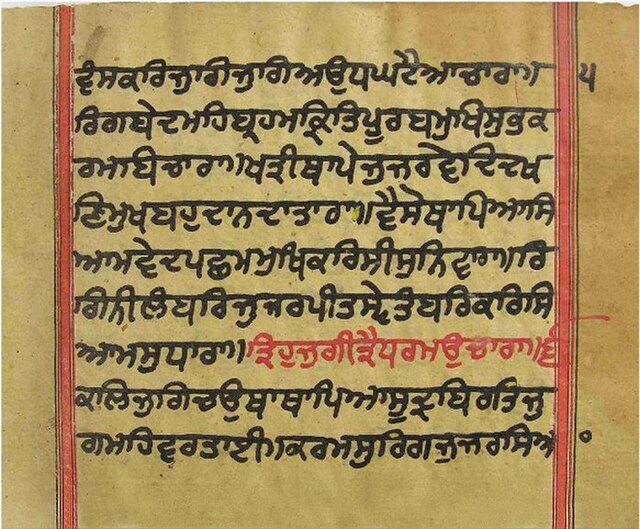The Sikh gurus are the spiritual masters of Sikhism, who established the religion over the course of about two and a half centuries, beginning in 1469. The year 1469 marks the birth of Guru Nanak, the founder of Sikhism. He was succeeded by nine other human gurus until, in 1708, the Guruship was finally passed on by the tenth guru to the holy Sikh scripture, Guru Granth Sahib, which is now considered the living Guru by the followers of the Sikh faith.
A miniature painting, dated 1890, depicting an "imaginary portrait" of the ten gurus and others.
Gurus of the Sikhs. Fresco from Dera Nirmala, Tanda-Hoshiarpur.
Imaginary Meeting of Guru Nanak and the rest of the Sikh Gurus, Bhai Mardana, and others. 1780 painting
Image: Detail of Guru Nanak from the earliest known painting of all ten Sikh gurus together, with each being identified in golden Persian nasta'liq script, probably painted in Hyderabad, circa 1780
Punjabi, sometimes spelled Panjabi, is an Indo-Aryan language native to the Punjab region of Pakistan and India, spoken predominantly by the Punjabi people. With approximately 148 million native speakers, it is the eighth most spoken native language in the world. It also has a few million additional speakers which, along with native speakers, makes it the twelfth most spoken language by the total number of speakers in the world.
Tilla Jogian, Jhelum District, Punjab, Pakistan, a hilltop associated with many Nath jogis (considered among compilers of earlier Punjabi works)
"Jallianwala Bagh" written in Hindi, Punjabi, and English in Amritsar, India.
Varan Gyan Ratnavali by 16th-century historian Bhai Gurdas.
Ghadar di Gunj 1913, newspaper in Punjabi of Ghadar Party, US-based Indian revolutionary party.








